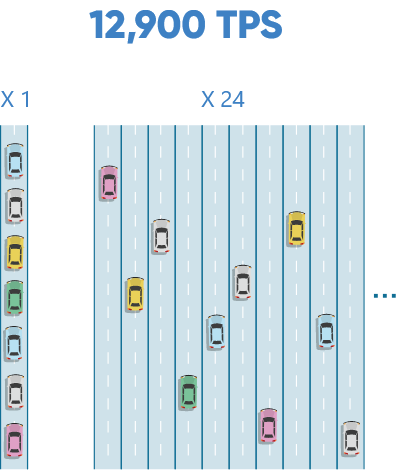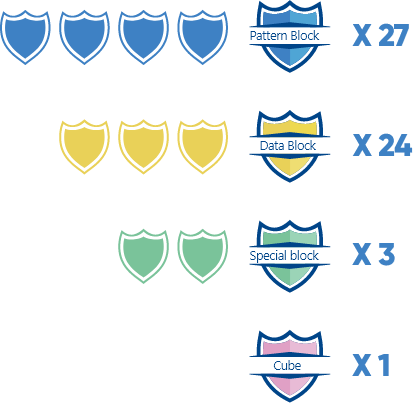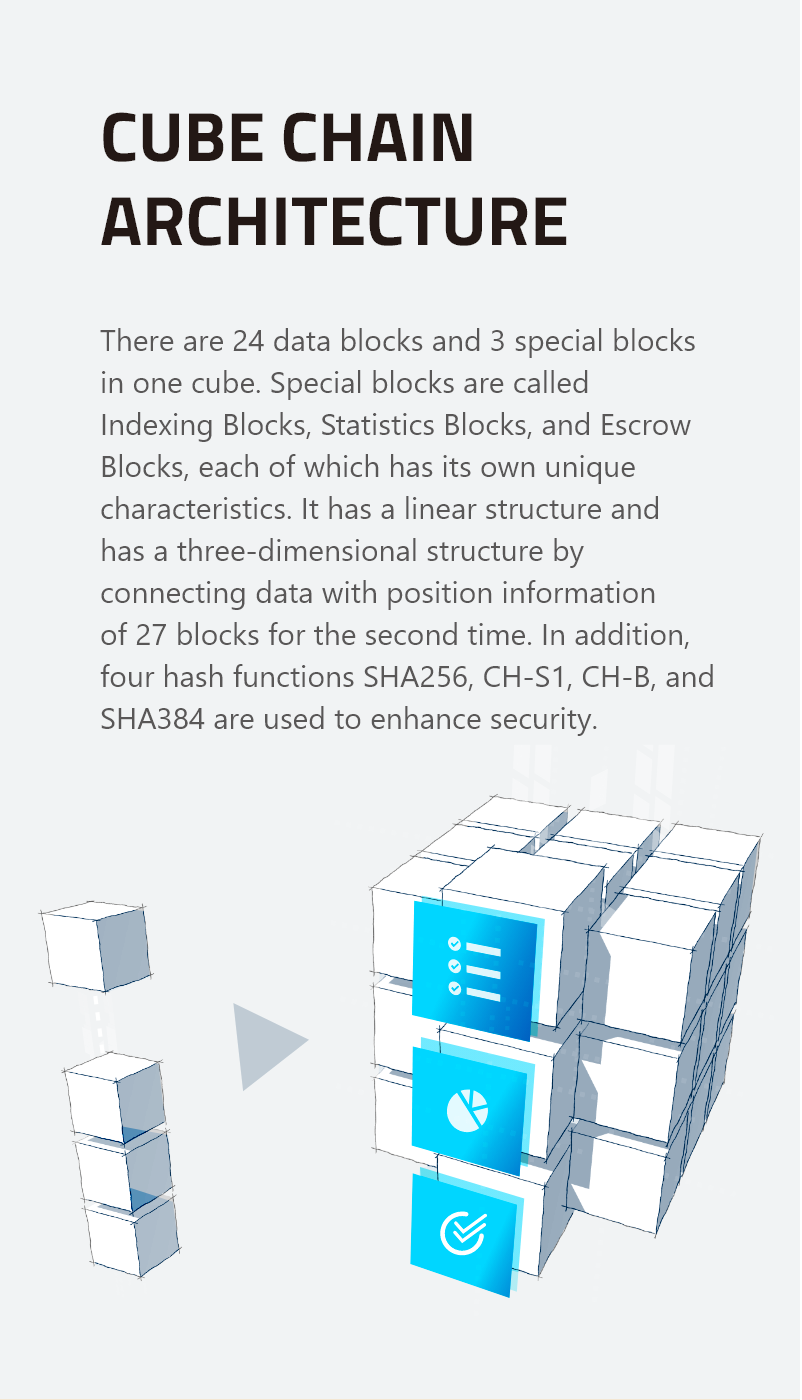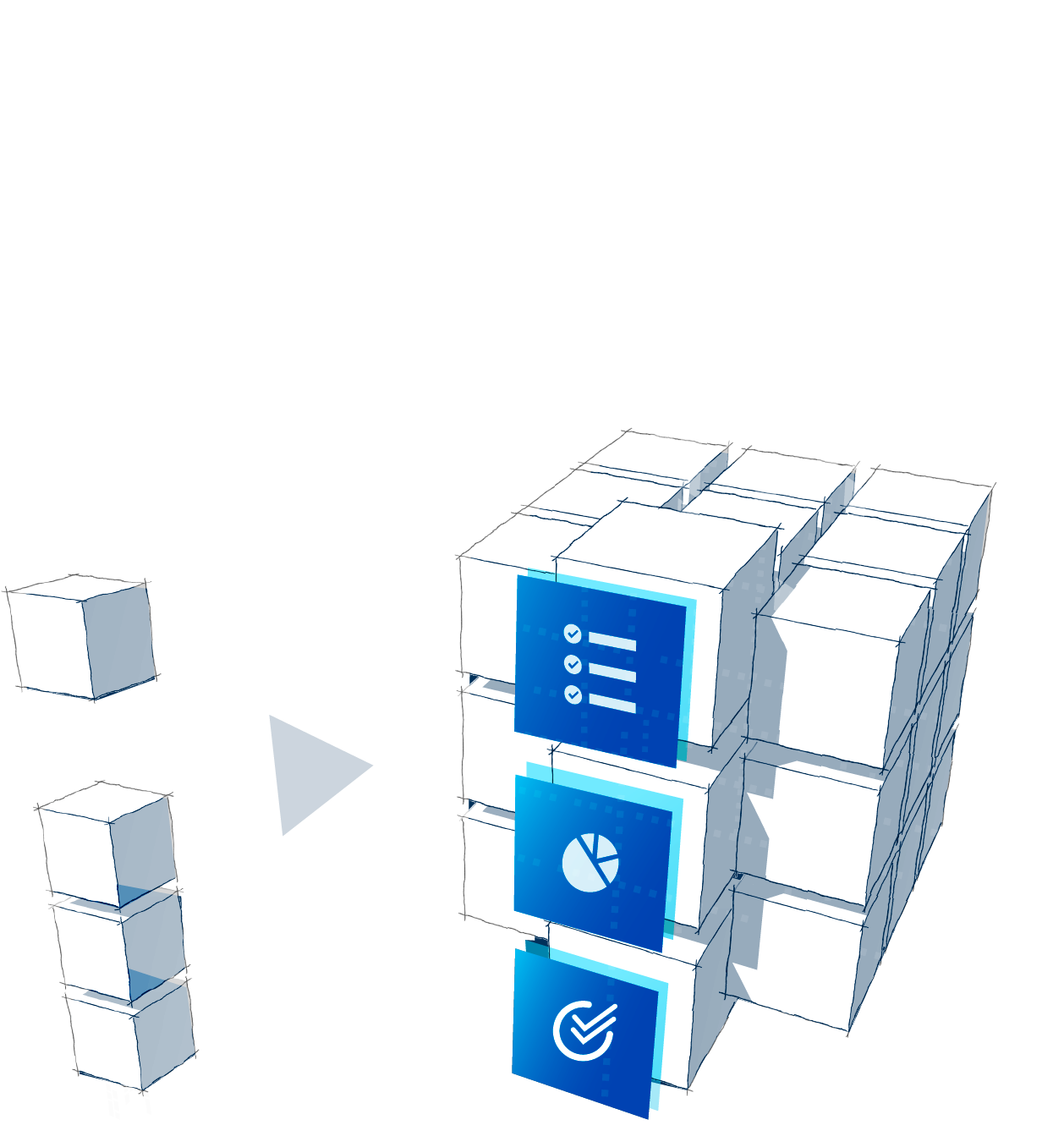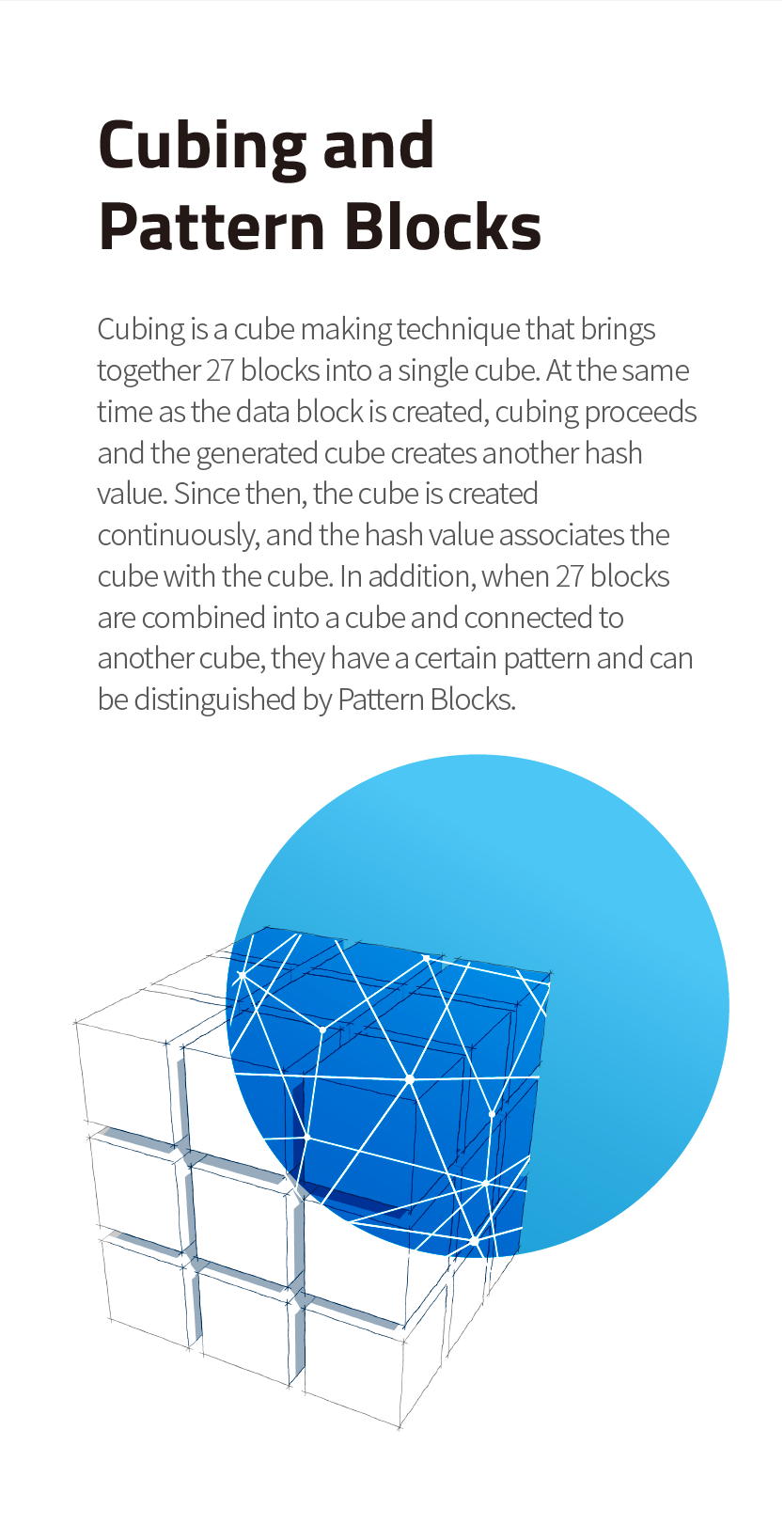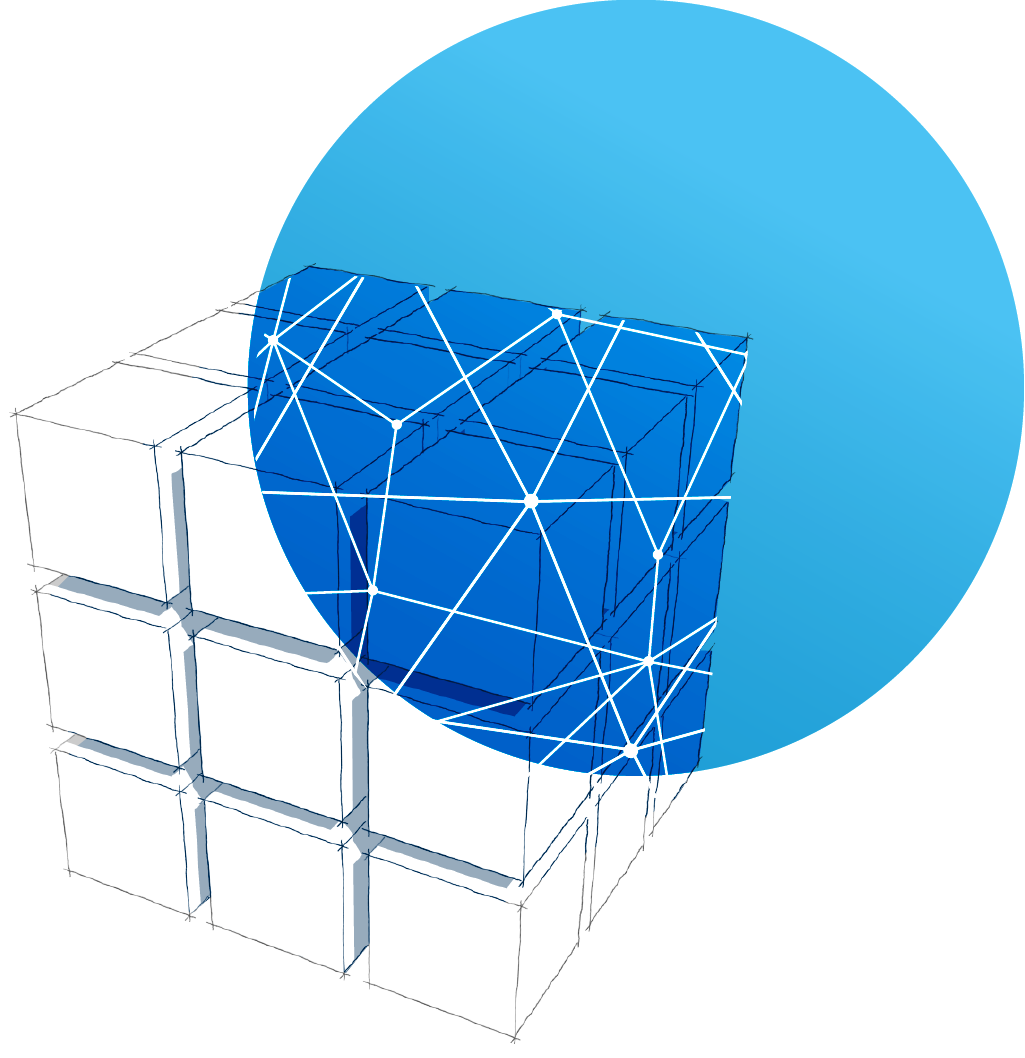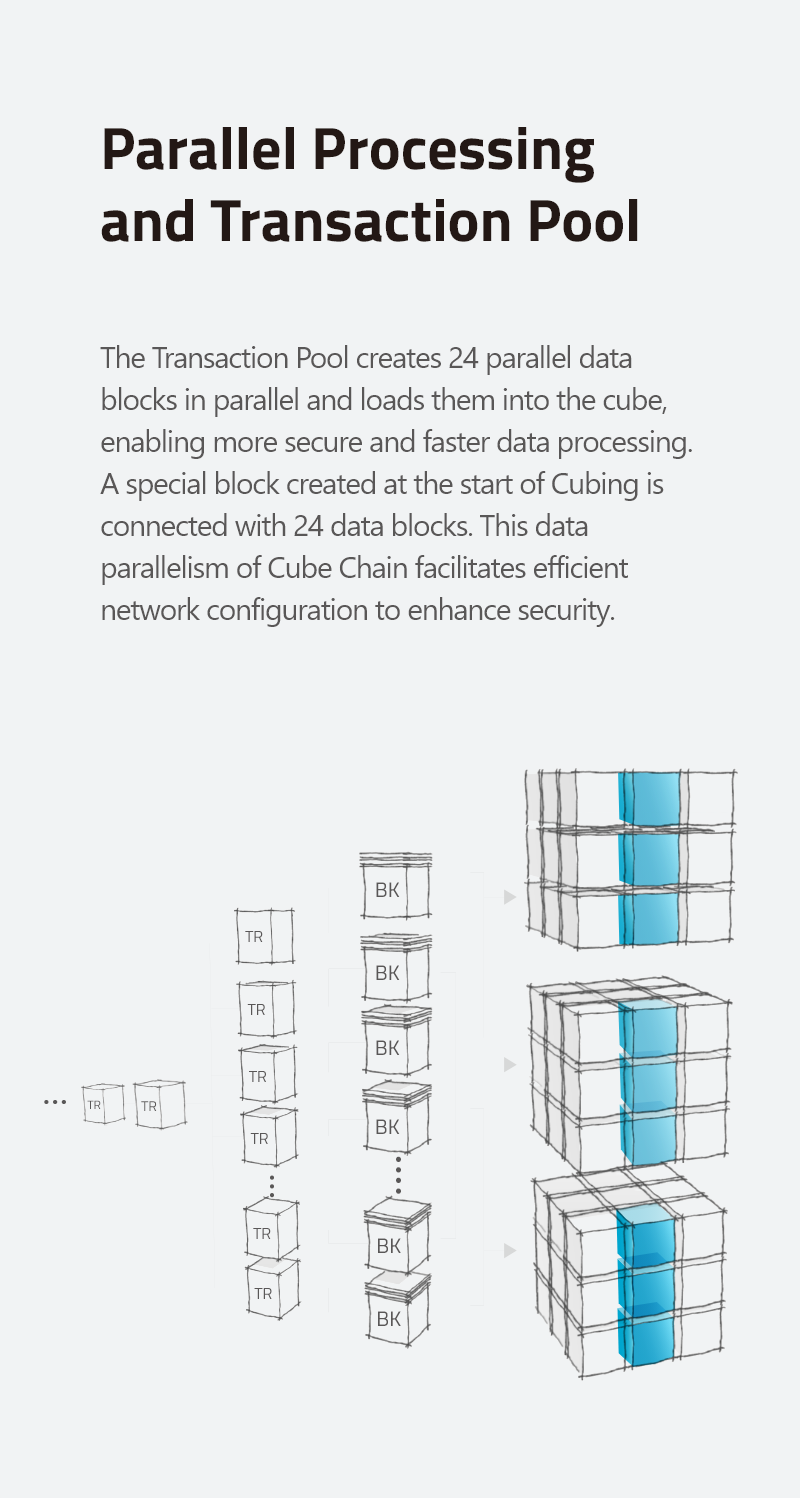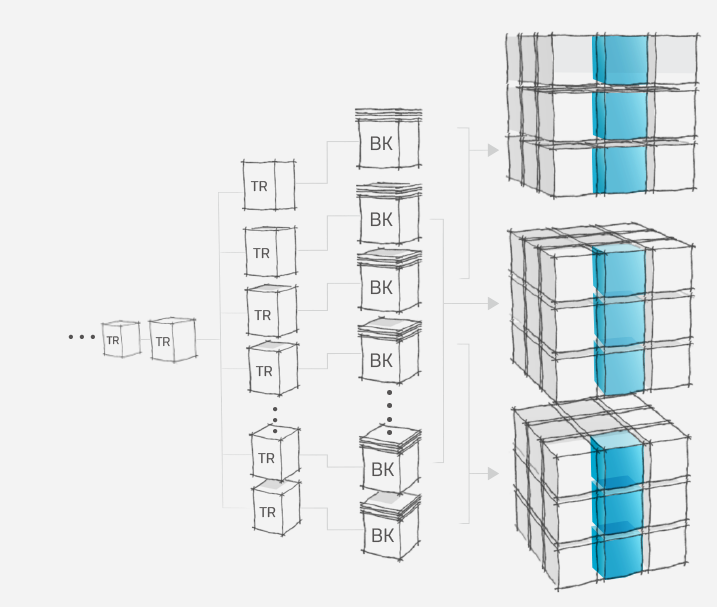ARTICLE I (ACCEPTANCE OF THE TERMS OF USE)
1. These terms of use are entered into by and between You and Cube System Co., Ltd. ("Company", "we" or "us"). The following terms and conditions, together with any documents they expressly incorporate by reference (collectively, these "Terms of Use"), govern your access to and use of cubechain.io, cubechainwallet.io, cubechainscan.io, miningsystem.io, including any content, functionality and services offered on or through cubechain.io, cubechainwallet.io, cubechainscan.io, miningsystem.io (the "Services", “Website”) whether as a guest or a registered user.
2. Please read the Terms of Use carefully before you start to use the Service. By using the Services or by clicking to accept or agree to the Terms of Use, you accept and agree to be bound and abide by these Terms of Use. If you do not want to agree to these Terms of Use, you must not access or use the Services.
3. These Services are offered and available to users who are 18 years of age or older and must not be a citizen nor anyone residing in the United States. By using these Services, you represent and warrant that you are of legal age to form a binding contract with the Company and meet all the foregoing eligibility requirements. If you do not meet all these requirements, you must not access or use the Services.
ARTICLE II (The Terms)
1. The Token (“Token”) refers to ERC-20 based QUB issued by the Company
2. The Coin (“Coin”) refers to blockchain based QUB issued by the Company
3. The Company provides free, unalienable license to use following platform services: Cube Chain and Cube Scan
4. Cube Chain (“Wallet”) refers to storage service with following functions:
i. Stores and manages the Coins within the platform
ii. Transfers, requests, and tracks Coins issued by Cube system
iii. Issues Tokens which could create special digital index in the platform
iv. Issues, stores, transfers, tracks, and manages Tokens issued or acquired
5. Cube Scan (“Scan”) refers to the services with following functions:
i. Confirms and tracks transfer and acquisition of Coins
ii. Provides various statistical chart of total transaction (ie. Issue and transfer) within the platform
6. All platform services are controlled by the program protocol. Service fees and other transaction fees are paid to mining participants of the Company
7. Service fees include following expenses:
i. Domain purchase
ii. Coupon issue
iii. Domain transfer
iv. Escrow usage
8. Mining refers to the participating in encryption process in exchange for Coins
9. Power of Work (“POW”) refers to mining open for the public
10. Power of Stake (“POS”) refers to mining open only for the Coins holder
11. 80% of the Company’s Coins are acquired through POW and POS
12. Main-net (“Main net”) refers to the program in the platform allowing its services
13. After launching Main net, the Token and the Coin will be exchanged at 1:1 value
ARTICLE III (CHANGES TO THE TERMS OF USE)
1. We may revise and update these Terms of Use from time to time in our sole discretion. All changes are effective immediately when we post them and apply to all access to and use of the Services thereafter. However, any changes to the dispute resolution provisions set forth in Governing Law and Jurisdiction will not apply to any disputes for which the parties have actual notice on or prior to the date the change is posted on the Services.
2. Your continued use of the Services following the posting of revised Terms of Use means that you accept and agree to the changes. You are expected to check this page each time you access one of these Services, so you are aware of any changes, as they are binding on you.
ARTICLE IV (Accessing the Services and Account Security)
1. We reserve the right to withdraw or amend the Services, and any service or material we provide on the Services, in our sole discretion without notice. We will not be liable if for any reason all or any part of the Services are unavailable at any time or for any period. From time to time, we may restrict access to some parts of the Services, or the entire Services, to users, including registered users.
2. You are responsible for:
i. Making all arrangements necessary for you to have access to the Services.
ii. Ensuring that all persons who access the Services through your internet connection are aware of these Terms of Use and comply with them.
3. To access the Services or some of the resources it offers, you may be asked to provide certain registration details or other information. It is a condition of your use of the Services that all the information you provide on the Services are correct, current, and complete. You agree that all information you provide to register with the Services or otherwise, including but not limited to through the use of any interactive features on the Services, is governed by our Terms of Use and you consent to all actions we take with respect to your information consistent with our Terms of Use.
4. If you choose, or are provided with, a user name, password or any other piece of information as part of our security procedures, you must treat such information as confidential, and you must not disclose it to any other person or entity. You also acknowledge that your account is personal to you and agree not to provide any other person with access to the Services or portions of it using your user name, password or other security information. You agree to notify us immediately of any unauthorized access to or use of your user name or password or any other breach of security. You also agree to ensure that you exit from your account at the end of each session. You should use caution when accessing your account from a public or shared computer so that others are not able to view or record your password or other personal information.
5. We have the right to disable any user name, password or other identifier, whether chosen by you or provided by us, at any time [in our sole discretion for any or no reason, including] if, in our opinion, you have violated any provision of these Terms of Use.
ARTICLE V (INTELLECTUAL PROPERTY RIGHTS)
1. The Services and its entire contents, features and functionality (including but not limited to all information, software, text, displays, images, video and audio, and the design, selection and arrangement thereof), are owned by the Company, its licensors or other providers of such material and are protected by Malaysia and international copyright, trademark, patent, trade secret and other intellectual property or proprietary rights laws.
2. These Terms of Use permit you to use the Services for your personal, non-commercial use only. You must not reproduce, distribute, modify, create derivative works of, publicly display, publicly perform, republish, download, store or transmit any of the material on our Services, except as follows:
i. Your computer may temporarily store copies of such materials in RAM incidental to your accessing and viewing those materials.
ii. You may store files that are automatically cached by your Web browser for display enhancement purposes.
iii. You may print [or download] one copy of a reasonable number of pages of the Services for your own personal, non-commercial use and not for further reproduction, publication or distribution.
iv. If we provide desktop, mobile or other applications for download, you may download a single copy to your computer or mobile device solely for your own personal, non-commercial use, provided you agree to be bound by our end user license agreement for such applications.
3. You must not:
i. Modify copies of any materials from the Services.
ii. Use any illustrations, photographs, video or audio sequences or any graphics separately from the accompanying text.
iii. Delete or alter any copyright, trademark or other proprietary rights notices from copies of materials from this site.
4. You must not access or use for any commercial purposes any part of the Services or materials available through the Services.
5. If you wish to make any use of material on the Services other than that set out in this section, please address your request to: help@cubechain.io
6. If you print, copy, modify, download or otherwise use or provide any other person with access to any part of the Services in breach of the Terms of Use, your right to use the Services will cease immediately and you must, at our option, return or destroy any copies of the materials you have made. No right, title or interest in or to the Services or any content on the Services is transferred to you, and all rights not expressly granted are reserved by the Company. Any use of the Services not expressly permitted by these Terms of Use is a breach of these Terms of Use and may violate copyright, trademark and other laws.
ARTICLE VI (Prohibited Uses)
1. You may use the Services only for lawful purposes and in accordance with these Terms of Use. You agree not to use the Services:
i. In any way that violates any applicable Malaysian or international law or regulation including, without limitation, any laws regarding the export of data or software to and from Malaysia.
ii. For the purpose of exploiting, harming or attempting to exploit or harm minors in any way by exposing them to inappropriate content, asking for personally identifiable information or otherwise.
iii. To send, knowingly receive, upload, download, use or re-use any material which does not comply with the Content Standards set out in this Terms of Use.
iv. To transmit, or procure the sending of, any advertising or promotional material without our prior written consent, including any "junk mail", "chain letter" or "spam" or any other similar solicitation.
v. To impersonate or attempt to impersonate the Company, a Company employee, another user or any other person or entity including, without limitation, by using e-mail addresses associated with any of the foregoing.
vi. To engage in any other conduct that restricts or inhibits anyone's use or enjoyment of the Services, or which, as determined by us, may harm the Company or users of the Services or expose them to liability.
Additionally, you agree not to:
vii. Use the Services in any manner that could disable, overburden, damage, or impair the site or interfere with any other party's use of the Services, including their ability to engage in real time activities through the Services.
viii. Use any robot, spider or other automatic device, process or means to access the Services for any purpose, including monitoring or copying any of the material on the Services.
ix. Use any manual process to monitor or copy any of the material on the Services or for any other unauthorized purpose without our prior written consent.
x. Use any device, software or routine that interferes with the proper working of the Services.
xi. Introduce any viruses, trojan horses, worms, logic bombs or other material which is malicious or technologically harmful.
xii. Attempt to gain unauthorized access to, interfere with, damage or disrupt any parts of the Services, the server on which the Services are stored, or any server, computer or database connected to the Services.
xiii. Attack the Services via a denial-of-service attack or a distributed denial-of-service attack.
xiv. Engage in following illegal activities through the Services:
1. Gamble
2. Committing fraud
3. Money laundering
4. Act of terror
xv. Otherwise attempt to interfere with the proper working of the Services.
ARTICLE VII (User Contributions)
1. The Services may contain message boards, chat rooms, personal web pages or profiles, forums, bulletin boards, and other interactive features (collectively, "Interactive Services") that allow users to post, submit, publish, display or transmit to other users or other persons (hereinafter, "post") content or materials (collectively, "User Contributions") on or through the Services.
2. All User Contributions must comply with the Content Standards set out in these Terms of Use.
3. Any User Contribution you post to the site will be considered non-confidential and non-proprietary. By providing any User Contribution on the Services, you grant Us and our affiliates and service providers, and each of their and our respective licensees, successors and assigns the right to use, reproduce, modify, perform, display, distribute and otherwise disclose to third parties any such material for any purpose.
You represent and warrant that:
i. You own or control all rights in and to the User Contributions and have the right to grant the license granted above to us and our affiliates and service providers, and each of their and our respective licensees, successors and assigns.
ii. All of your User Contributions do and will comply with these Terms of Use.
4. You understand and acknowledge that you are responsible for any User Contributions you submit or contribute, and you, not the Company, have fully responsibility for such content, including its legality, reliability, accuracy and appropriateness.
5. We are not responsible, or liable to any third party, for the content or accuracy of any User Contributions posted by you or any other user of the Services.
ARTICLE VIII (Monitoring and Enforcement; Termination)
1. We have the right to:
i. Remove or refuse to post any User Contributions for any or no reason in our sole discretion.
ii. Take any action with respect to any User Contribution that we deem necessary or appropriate in our sole discretion, including if we believe that such User Contribution violates the Terms of Use, including the Content Standards, infringes any intellectual property right or other right of any person or entity, threatens the personal safety of users of the Services or the public or could create liability for the Company.
iii. Disclose your identity or other information about you to any third party who claims that material posted by you violates their rights, including their intellectual property rights or their right to privacy.
iv. Take appropriate legal action, including without limitation, referral to law enforcement, for any illegal or unauthorized use of the Services.
v. Terminate or suspend your access to all or part of the Services for any or no reason, including without limitation,] any violation of these Terms of Use.
2. Without limiting the foregoing, we have the right to fully cooperate with any law enforcement authorities or court order requesting or directing us to disclose the identity or other information of anyone posting any materials on or through the Services. YOU WAIVE AND HOLD HARMLESS THE COMPANY [AND ITS AFFILIATES, LICENSEES AND SERVICE PROVIDERS] FROM ANY CLAIMS RESULTING FROM ANY ACTION TAKEN BY [THE COMPANY/ANY OF THE FOREGOING PARTIES] DURING OR AS A RESULT OF ITS INVESTIGATIONS AND FROM ANY ACTIONS TAKEN AS A CONSEQUENCE OF INVESTIGATIONS BY EITHER [THE COMPANY/SUCH PARTIES] OR LAW ENFORCEMENT AUTHORITIES.
3. However, we do not undertake to review all material before it is posted on the Services and cannot ensure prompt removal of objectionable material after it has been posted. Accordingly, we assume no liability for any action or inaction regarding transmissions, communications or content provided by any user or third party. We have no liability or responsibility to anyone for performance or nonperformance of the activities described in this section.
ARTICLE IX (Content Standards)
1. These content standards apply to all User Contributions and use of Interactive Services. User Contributions must in their entirety comply with all applicable federal, state, local and international laws and regulations. Without limiting the foregoing, User Contributions must not:
i. Contain any material which is defamatory, obscene, indecent, abusive, offensive, harassing, violent, hateful, inflammatory or otherwise objectionable.
ii. Promote sexually explicit or pornographic material, violence, or discrimination based on race, sex, religion, nationality, disability, sexual orientation or age.
iii. Infringe any patent, trademark, trade secret, copyright or other intellectual property or other rights of any other person.
iv. Violate the legal rights including the rights of publicity and privacy of others or contain any material that could give rise to any civil or criminal liability under applicable laws or regulations or that otherwise may be in conflict with these Terms of Use.
v. Be likely to deceive any person.
vi. Promote any illegal activity, or advocate, promote or assist any unlawful act.
vii. Cause annoyance, inconvenience or needless anxiety or be likely to upset, embarrass, alarm or annoy any other person.
viii. Impersonate any person or misrepresent your identity or affiliation with any person or organization.
ix. Involve commercial activities or sales, such as contests, sweepstakes and other sales promotions, barter or advertising.
x. Give the impression that they emanate from or are endorsed by us or any other person or entity, if this is not the case.
ARTICLE X (Copyright Infringement)
1. If you believe that any User Contributions violate your copyright, please send us a notice of copyright infringement.
2. It is the policy of the Company to terminate the user accounts of repeat infringers.
ARTICLE XI (Reliance on Information Posted)
1. The information presented on or through the Services is made available solely for general information purposes. We do not warrant the accuracy, completeness or usefulness of this information. Any reliance you place on such information is strictly at your own risk. We disclaim all liability and responsibility arising from any reliance placed on such materials by you or any other visitor to the Services, or by anyone who may be informed of any of its contents.
2. The Services may include content provided by third parties, including materials provided by other users, bloggers and third-party licensors, syndicators, aggregators and/or reporting services. All statements and/or opinions expressed in these materials, and all articles and responses to questions and other content, other than the content provided by the Company, are solely the opinions and the responsibility of the person or entity providing those materials. These materials do not necessarily reflect the opinion of the Company. We are not responsible, or liable to you or any third party, for the content or accuracy of any materials provided by any third parties.
ARTICLE XII (CHANGES TO THE SERVICES)
1. We may update the content on these Services from time to time, but its content is not necessarily complete or up-to-date. Any of the material on these Services may be out of date at any given time, and we are under no obligation to update such material.
ARTICLE XIII (Information About You and Your Visits to the Services)
1. All information we collect on Services is subject to our Terms of Use. By using the Services, you consent to all actions taken by us with respect to your information in compliance with the Terms of Use.
ARTICLE XIV (LINKING TO THE SERVICES AND SOCIAL MEDIA FEATURES)
1. You may link to our homepage, provided you do so in a way that is fair and legal and does not damage our reputation or take advantage of it, but you must not establish a link in such a way as to suggest any form of association, approval or endorsement on our part without our express written consent.
2. The Services may provide certain social media features that enable you to:
i. Link from your own or certain third-party websites to certain content on the Services.
ii. Send e-mails or other communications with certain content, or links to certain content, on the Services.
iii. Cause limited portions of content on the Services to be displayed or appear to be displayed on your own or certain third-party websites.
iv. You may use these features solely as they are provided by us, and solely with respect to the content they are displayed with and otherwise in accordance with any additional terms and conditions we provide with respect to such features. Subject to the foregoing, you must not:
v. Establish a link from any website that is not owned by you.
vi. Cause the Services or portions of it to be displayed, or appear to be displayed by, for example, framing, deep linking or in-line linking, on any other site.
vii. Link to any part of the Services other than the homepage.
viii. Otherwise take any action with respect to the materials on the Services that is inconsistent with any other provision of these Terms of Use.
ix. The website from which you are linking, or on which you make certain content accessible, must comply in all respects with the Content Standards set out in these Terms of Use.
x. You agree to cooperate with us in causing any unauthorized framing or linking immediately to cease. We reserve the right to withdraw linking permission without notice.
xi. We may disable all or any social media features and any links at any time without notice in our discretion.
ARTICLE XV (Links from the Services)
1. If the Services contains links to other sites and resources provided by third parties, these links are provided for your convenience only. This includes links contained in advertisements, including banner advertisements and sponsored links.
2. We have no control over the contents of those sites or resources and accept no responsibility for them or for any loss or damage that may arise from your use of them. If you decide to access any of the third-party websites linked to the Services, you do so entirely at your own risk and subject to the terms and conditions of use for such websites.
ARTICLE XVI (Geographic Restrictions)
1. The owner of the Services is based in Malaysia. We make no claims that the Services or any of its content is accessible or appropriate outside of Malaysia. Access to the Services may not be legal by certain persons or in certain countries. If you access the Services from outside Malaysia, you do so on your own initiative and are responsible for compliance with local laws.
ARTICLE XVII (Disclaimer of Warranties)
1. You understand that we cannot and do not guarantee or warrant that files available for downloading from the internet or the Services will be free of viruses or other destructive code. You are responsible for implementing sufficient procedures and checkpoints to satisfy your particular requirements for anti-virus protection and accuracy of data input and output, and for maintaining a means external to our site for any reconstruction of any lost data. WE WILL NOT BE LIABLE FOR ANY LOSS OR DAMAGE CAUSED BY A DISTRIBUTED DENIAL-OF-SERVICE ATTACK, VIRUSES OR OTHER TECHNOLOGICALLY HARMFUL MATERIAL THAT MAY INFECT YOUR COMPUTER EQUIPMENT, COMPUTER PROGRAMS, DATA OR OTHER PROPRIETARY MATERIAL DUE TO YOUR USE OF THE WEBSITE OR ANY SERVICES OR ITEMS OBTAINED THROUGH THE WEBSITE OR TO YOUR DOWNLOADING OF ANY MATERIAL POSTED ON IT, OR ON ANY WEBSITE LINKED TO IT.
2. YOUR USE OF THE WEBSITE, ITS CONTENT AND ANY SERVICES OR ITEMS OBTAINED THROUGH THE WEBSITE IS AT YOUR OWN RISK. THE WEBSITE, ITS CONTENT AND ANY SERVICES OR ITEMS OBTAINED THROUGH THE WEBSITE ARE PROVIDED ON AN "AS IS" AND "AS AVAILABLE" BASIS, WITHOUT ANY WARRANTIES OF ANY KIND, EITHER EXPRESS OR IMPLIED. NEITHER THE COMPANY NOR ANY PERSON ASSOCIATED WITH THE COMPANY MAKES ANY WARRANTY OR REPRESENTATION WITH RESPECT TO THE COMPLETENESS, SECURITY, RELIABILITY, QUALITY, ACCURACY OR AVAILABILITY OF THE WEBSITE. WITHOUT LIMITING THE FOREGOING, NEITHER THE COMPANY NOR ANYONE ASSOCIATED WITH THE COMPANY REPRESENTS OR WARRANTS THAT THE WEBSITE, ITS CONTENT OR ANY SERVICES OR ITEMS OBTAINED THROUGH THE WEBSITE WILL BE ACCURATE, RELIABLE, ERROR-FREE OR UNINTERRUPTED, THAT DEFECTS WILL BE CORRECTED, THAT OUR SITE OR THE SERVER THAT MAKES IT AVAILABLE ARE FREE OF VIRUSES OR OTHER HARMFUL COMPONENTS OR THAT THE WEBSITE OR ANY SERVICES OR ITEMS OBTAINED THROUGH THE WEBSITE WILL OTHERWISE MEET YOUR NEEDS OR EXPECTATIONS.
3. THE COMPANY HEREBY DISCLAIMS ALL WARRANTIES OF ANY KIND, WHETHER EXPRESS OR IMPLIED, STATUTORY OR OTHERWISE, INCLUDING BUT NOT LIMITED TO ANY WARRANTIES OF MERCHANTABILITY, NON-INFRINGEMENT AND FITNESS FOR PARTICULAR PURPOSE.
THE FOREGOING DOES NOT AFFECT ANY WARRANTIES WHICH CANNOT BE EXCLUDED OR LIMITED UNDER APPLICABLE LAW.
ARTICLE XVIII (Limitation on Liability)
1. IN NO EVENT WILL THE COMPANY, ITS AFFILIATES OR THEIR LICENSORS, SERVICE PROVIDERS, EMPLOYEES, AGENTS, OFFICERS OR DIRECTORS BE LIABLE FOR DAMAGES OF ANY KIND, UNDER ANY LEGAL THEORY, ARISING OUT OF OR IN CONNECTION WITH YOUR USE, OR INABILITY TO USE, THE WEBSITE, ANY WEBSITES LINKED TO IT, ANY CONTENT ON THE WEBSITE OR SUCH OTHER WEBSITES OR ANY SERVICES OR ITEMS OBTAINED THROUGH THE WEBSITE OR SUCH OTHER WEBSITES, INCLUDING ANY DIRECT, INDIRECT, SPECIAL, INCIDENTAL, CONSEQUENTIAL OR PUNITIVE DAMAGES, INCLUDING BUT NOT LIMITED TO, PERSONAL INJURY, PAIN AND SUFFERING, EMOTIONAL DISTRESS, LOSS OF REVENUE, LOSS OF PROFITS, LOSS OF BUSINESS OR ANTICIPATED SAVINGS, LOSS OF USE, LOSS OF GOODWILL, LOSS OF DATA, AND WHETHER CAUSED BY TORT (INCLUDING NEGLIGENCE), BREACH OF CONTRACT OR OTHERWISE, EVEN IF FORESEEABLE.
2. THE FOREGOING DOES NOT AFFECT ANY LIABILITY WHICH CANNOT BE EXCLUDED OR LIMITED UNDER APPLICABLE LAW.
ARTICLE XIX (Indemnification)
1. You agree to defend, indemnify and hold harmless the Company, its affiliates, licensors and service providers, and its and their respective officers, directors, employees, contractors, agents, licensors, suppliers, successors and assigns from and against any claims, liabilities, damages, judgments, awards, losses, costs, expenses or fees (including reasonable attorneys' fees) arising out of or relating to your violation of these Terms of Use or your use of the Services, including, but not limited to, your User Contributions, any use of the Services’ content and products other than as expressly authorized in these Terms of Use or your use of any information obtained from the Services.
ARTICLE XX (Governing Law and Jurisdiction)
1. All matters relating to the Services and these Terms of Use and any dispute or claim arising therefrom or related thereto (in each case, including non-contractual disputes or claims), shall be governed by and construed in accordance with the internal laws of Malaysia without giving effect to any choice or conflict of law provision or rule.
2. Any legal suit, action or proceeding arising out of, or related to, these Terms of Use or the Services shall be instituted exclusively in the courts of Malaysia although we retain the right to bring any suit, action or proceeding against you for breach of these Terms of Use in your country of residence or any other relevant country. You waive all objections to the exercise of jurisdiction over you by such courts and to venue in such courts.
ARTICLE XXI (Arbitration)
1. At Company's sole discretion, it may require You to submit any disputes arising from the use of these Terms of Use or the Services, including disputes arising from or concerning their interpretation, violation, invalidity, non-performance, or termination, to final and binding arbitration under the Rules of Arbitration of the Malaysian Arbitration Association applying the law of Malaysia.
ARTICLE XXII (Limitation on Time to File Claims)
1. ANY CAUSE OF ACTION OR CLAIM YOU MAY HAVE ARISING OUT OF OR RELATING TO THESE TERMS OF USE OR THE SERVICES MUST BE COMMENCED WITHIN ONE (1) YEAR AFTER THE CAUSE OF ACTION ACCRUES, OTHERWISE, SUCH CAUSE OF ACTION OR CLAIM IS PERMANENTLY BARRED.
ARTICLE XXIII (Waiver and Severability)
1. No waiver of by the Company of any term or condition set forth in these Terms of Use shall be deemed a further or continuing waiver of such term or condition or a waiver of any other term or condition, and any failure of the Company to assert a right or provision under these Terms of Use shall not constitute a waiver of such right or provision.
2. If any provision of these Terms of Use is held by a court or other tribunal of competent jurisdiction to be invalid, illegal or unenforceable for any reason, such provision shall be eliminated or limited to the minimum extent such that the remaining provisions of the Terms of Use will continue in full force and effect.
ARTICLE XXIV (Entire Agreement)
1. The Terms of Use constitute the sole and entire agreement between you and Cube System Ltd. with respect to the Services and supersede all prior and contemporaneous understandings, agreements, representations and warranties, both written and oral, with respect to the Services.
ARTICLE XXV (Your Comments and Concerns)
1. The Services are operated by Cube System Ltd., 1st Floor, Unit No. C-40 Jalan Zuhal U5/178, Pusat Kormesial Arena Bintang Seksyen U5 40150 Shah Alam Selangor Malaysia Cube Asia Pacific Sdn. Bh. (1279556-M).
2. All other feedback, comments, requests for technical support and other communications relating to the Services should be directed to: help@cubechain.io
